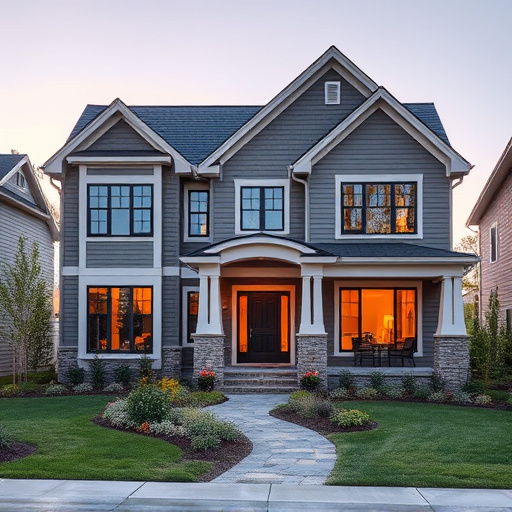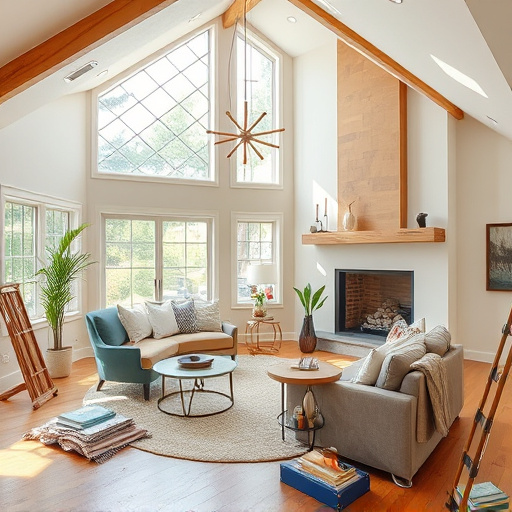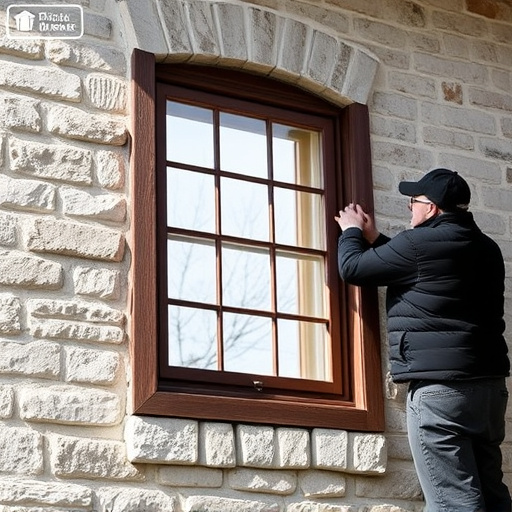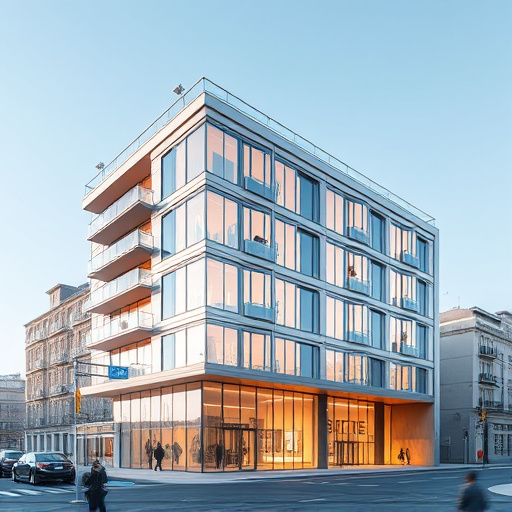Office design significantly influences employee well-being and productivity, with inclusive design principles fostering creativity, collaboration, and job satisfaction. Essential elements include natural lighting, ergonomic furniture, open communication spaces, and customizable seating arrangements to cater to diverse needs. As remote work becomes prevalent, effectively transforming home offices through interior design can create a motivating environment that encourages teamwork and innovation, mirroring the benefits of well-designed exterior workspaces.
In today’s dynamic work environment, inclusive office design is not just a trend but a necessity. The way we design our workspaces significantly impacts employee well-being and productivity. This article explores how thoughtful office design can foster collaboration, cater to diverse needs, and ultimately drive business success. From the connection between physical space and mental health to the business benefits of attracting and retaining talent, discover why inclusive office design matters for every workplace.
- The Impact of Office Design on Employee Well-being and Productivity
- – Exploring the connection between physical space and mental health
- – How inclusive design can enhance collaboration and creativity
The Impact of Office Design on Employee Well-being and Productivity
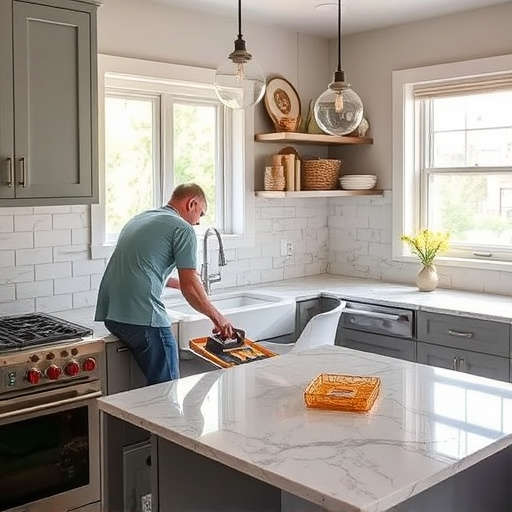
The design of our workspaces plays a significant role in shaping employee well-being and productivity. A thoughtfully designed office goes beyond aesthetics; it influences how individuals interact, collaborate, and ultimately feel about their work environment. Inclusive office design, which considers diverse needs and preferences, is key to fostering a healthy and engaged workforce. Factors like natural lighting, ergonomic furniture, and open communication spaces can reduce stress levels, improve focus, and enhance overall job satisfaction.
In today’s dynamic work landscape, where remote work and hybrid models are becoming the norm, understanding how office design impacts productivity is more crucial than ever. Just as residential renovations transform homes into havens of comfort and inspiration, effective office transformations can turn workplaces into spaces that encourage creativity, innovation, and a sense of belonging. By prioritizing inclusive design principles, organizations can create environments that not only support but also celebrate the unique contributions of every employee.
– Exploring the connection between physical space and mental health
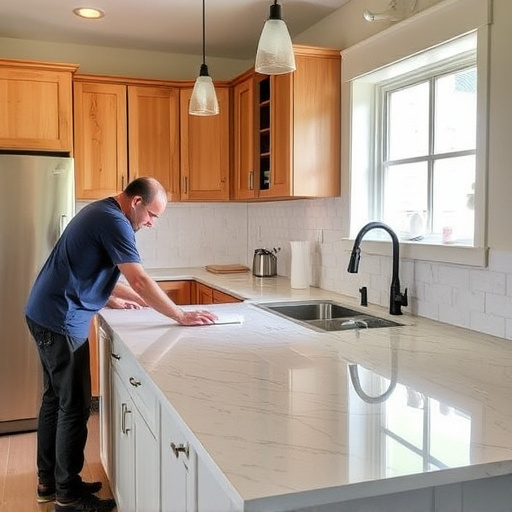
The physical space we occupy greatly influences our mental well-being, especially within a workplace setting. Research has consistently shown that office design plays a pivotal role in shaping employee satisfaction and productivity. A well-designed workspace can foster a sense of belonging and enhance overall mental health by offering customizable elements tailored to individual needs. This is particularly important as remote work becomes more prevalent, emphasizing the need for home offices to be transformed through clever interior design strategies.
By integrating various design principles, such as natural lighting, ergonomic furniture, and calming aesthetics, office spaces can reduce stress levels and improve focus. Furthermore, customized home renovations or transformations can cater to diverse employee preferences, ensuring everyone feels comfortable and motivated. Much like exterior painting refreshes a building’s curb appeal, thoughtful office design transforms the interior environment, creating a positive atmosphere that boosts creativity and teamwork.
– How inclusive design can enhance collaboration and creativity
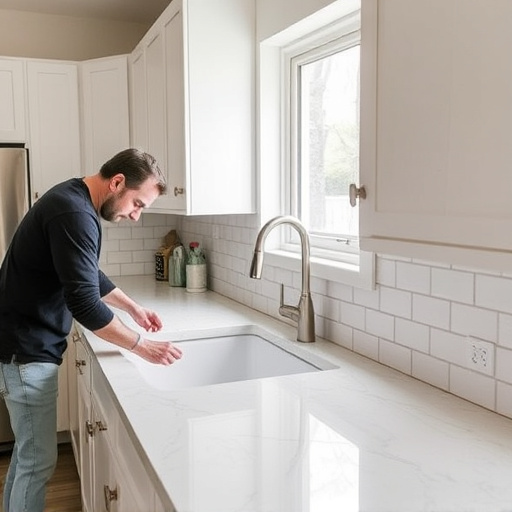
Inclusive office design goes beyond aesthetics; it’s a powerful tool to foster collaboration and ignite creativity among employees. By creating spaces that cater to diverse needs and preferences, organizations encourage open communication and different perspectives. This is particularly evident in collaborative areas like break rooms or common workspaces. For instance, incorporating flexible seating options allows team members with varying physical needs or work styles to find their sweet spot, fostering a more comfortable and productive environment.
Moreover, inclusive design promotes creativity by providing diverse visual stimuli and sensory experiences. Well-designed spaces can inspire employees, boost mood, and stimulate innovative thinking. This could include natural lighting, greenery, and thoughtfully chosen color palettes. Even elements like custom artwork or unique architectural features can serve as conversation starters, encouraging staff to connect, share ideas, and collaborate across departments, ultimately enhancing the overall workplace experience and driving business growth through collective creativity.
In today’s diverse workforce, an inclusive office design is not just a moral imperative but also a powerful tool for enhancing employee well-being and productivity. By creating spaces that cater to various needs and preferences, organizations can foster collaboration, spark creativity, and ultimately drive better business outcomes. Embracing flexible layouts, diverse furniture options, and accessible environments sends a clear message that every employee matters, leading to a happier, more engaged workforce. Thus, investing in inclusive office design is not just a step towards creating an equitable workplace but also a strategic move for long-term success.

